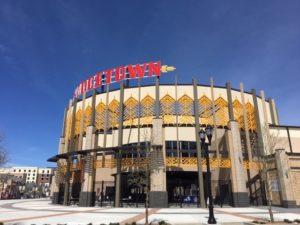
This just in: A former Amarillo mayor has tossed her name into the mix to be considered for appointment to the Amarillo Independent School District Board of Trustees.
Yep, that would be Debra McCartt.
This news excites me. I happen to know McCartt. I also happen to believe she would lend some needed gravitas to the board. She also would bring some important governing experience to a board that has gone through its share of turmoil in recent months.
Here is what McCartt said today on Facebook: I’m excited to announce that I have officially thrown my name into the hat to fill one of the two open spots on the Amarillo Independent School District’s Board of Trustees. As you know, I’ve always had a passion for serving my community and have a long history of working in education, including eight years as a teacher and most recently a substitute. Educating our children is one of the most critical investments that we can make! I would love to be able to work to make our already excellent school district even better for our students. Stay tuned!
I’m going to “stay tuned,” all right.
Two board seats need filling, as McCartt points out. One of them once was occupied by John Ben Blanchard, the other by Renee McCown. They both resigned shortly after the May election that produced several newcomers to the seven-member board.
Why is McCartt a fascinating candidate for appointment? It’s because she brings an enormous level of energy to a governing body such as this.
She served three terms as mayor of Amarillo. Prior to that she served a couple of terms as city commissioner. She earned her spurs on that governing board. Indeed, I was fond of suggesting that McCartt defied “the laws of physics” by seeming to be everywhere in the city all at once. She was a tremendous advocate and spokeswoman for the city.
I believe her ability to speak passionately for the city transfers to the Amarillo Independent School District.
I mentioned the tumult that enveloped the school district. It involved the resignation of a high school volleyball coach the implication that a school trustee had interfered with the coach’s performance of her job. McCown was the trustee allegedly involved in that mess. A complaint filed with the Texas Education Agency said that McCown had interfered on behalf of her daughters, who played for the Amarillo High School Sandies volleyball team. The coach quit and said in her resignation letter that the board and administration had failed to give her the backing she believed she needed.
To the best of my knowledge, McCartt does not have any children currently enrolled in the Amarillo public school system. I do not know if she has any grandchildren in the system.
I do know, though, that her time as a city commissioner and mayor did not include any accusations of meddling. She knows her limits as a member of a governing board and follows the rules to the letter.
There will be other good candidates, to be sure. I just feel the need to weigh in on this application in the hope that the AISD board gives Debra McCartt full consideration for an appointment.
I believe she would be a great addition to the school board.







